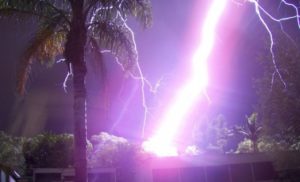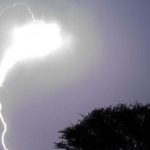Interesting facts about lightning
 What, if not lightning, can serve as proof of the boundless power of nature? The monstrous power of electric discharges, blazing in thunderclouds, from time immemorial attracted human attention and for a long time were a mystery, until finally their nature was uncovered by the inquisitive mankind.
What, if not lightning, can serve as proof of the boundless power of nature? The monstrous power of electric discharges, blazing in thunderclouds, from time immemorial attracted human attention and for a long time were a mystery, until finally their nature was uncovered by the inquisitive mankind.
In a variety of different religions, lightning is associated with God’s punishment.
The first glass used by man was of natural origin. When lightning hits the sand, it fuses into glass tubes.
Numerous cases of lightning hit by aircraft have been recorded.
Every second on the planet, more than fifty lightning strikes the ground.
The speed of a lightning strike is more than fifty thousand kilometers per hour.
The average length of lightning is almost ten kilometers.
The temperature of lightning can be five times the surface temperature of the sun, reaching twenty-five thousand degrees.
Lightning is also on other planets, for example, on Jupiter.
Most of the world’s lightning is in the Argentine pampas.
Only every fourth lightning reaches the surface of the Earth.
Contrary to the well-known saying, lightning often hits the same place twice, or even thrice.
American Roy Sullivan received lightning strikes seven times, but remained alive, and at the same time got into the Guinness Book of Records.
Of all the trees most often lightning beats in the oak, and least often – in beech.
Annually in the earth’s atmosphere almost one and a half billion lightning are raging.
A powerful lightning discharge generates a dangerous shock wave.
In 1972, a paralyzed English courtier, having received a lightning strike, again gained the ability to move.
In 1998, in the Democratic Republic of the Congo, a lightning strike in a football field ruined the whole team of football players – eleven people.
Air in the immediate vicinity of the lightning discharge can instantly heat up to a half thousand degrees.
Metal objects attract lightning.
The town of Tororo, located on the territory of the African country of Uganda, is about two hundred and fifty days a year – stormy.
Normal lightning has nothing to do with the ball.
In Egypt, lightning flashes an average of two hundred years.
According to statistics, the chances of dying from a lightning strike and from falling off the bed are approximately equal.
Three quarters of people hit by lightning survive.
There are power stations that accumulate and use the energy of lightning.



























